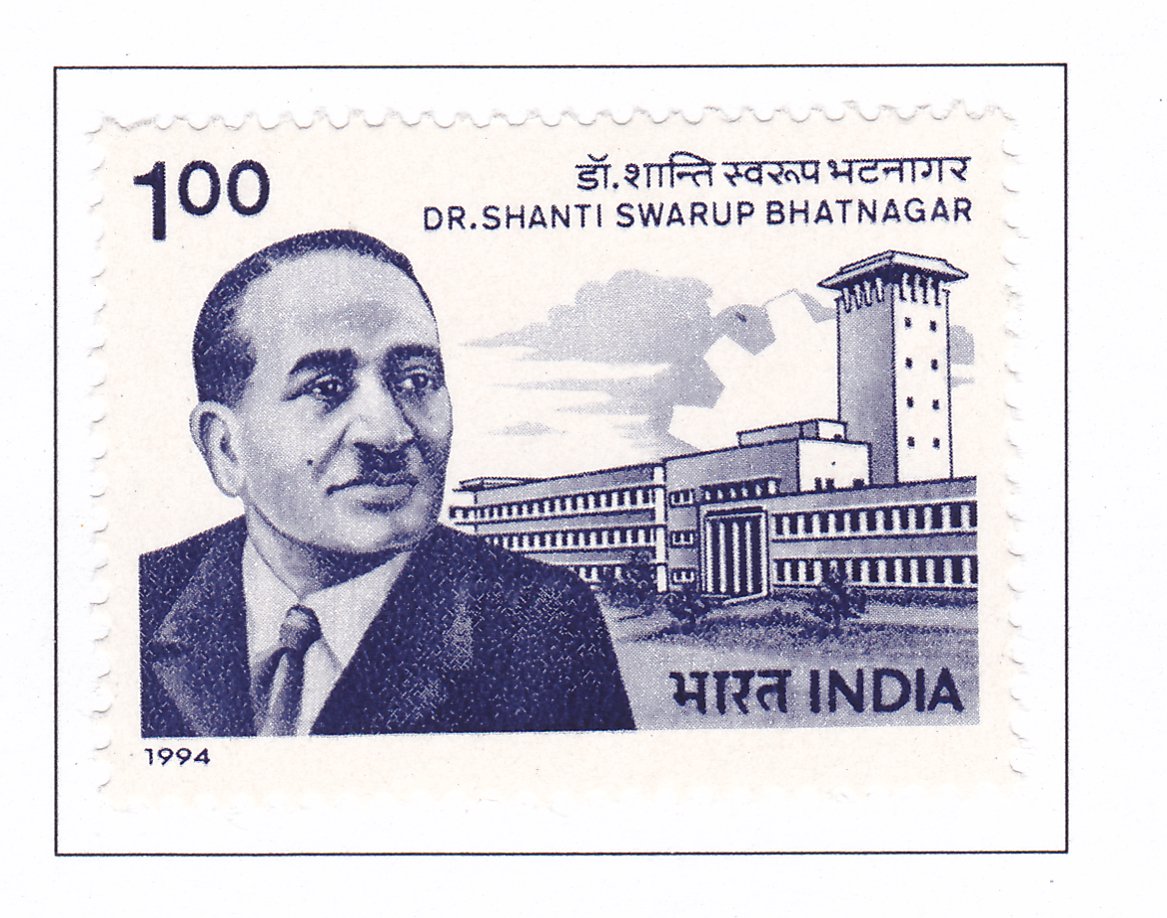Dr. Shanti Swarup Bhatnagar

Technical Data
| Date of Issue | February 21, 1994 |
|---|---|
| Denomination | Rs. 1 |
| Quantity | 600,000 |
| Perforation | comb 13½ x 13 |
| Printer | Security Printing Press, Nashik |
| Watermark | No Watermark |
| Colors | Dark violet blue |
| Catalog Codes |
Michel IN 1419 Stamp Number IN 1479 Yvert et Tellier IN 1217 Stanley Gibbons IN 1569 |
| Themes | Buildings | Commemoration | Famous people | Men | Scientists | Universities |
Table of Contents
Prof. Sir Shanti Swarup Bhatnagar: A Pioneer of Indian Science
Basic Details:
- Birth: 21 February 1894, Bhera, Punjab (now in Pakistan)
- Death: 1 January 1955
Early Life and Education:
- Schooling: Educated in Lahore, with notable achievements in Urdu and a high school scholarship.
- Interests: Early interest in Brahmo Samaj and science. Published a paper on carbon electrodes in 1911.
- Higher Education: M.Sc. in 1919; studied at University College, London; researched in Berlin and Paris.
Academic and Professional Career:
- Teaching: Appointed Professor of Chemistry at Banaras Hindu University (BHU), where he conducted significant research in colloid chemistry and magneto-chemistry.
- Research and Innovation: Developed a process for carbon electrodes using indigenous materials during WWII. Worked on applied and industrial chemistry.
Contributions and Achievements:
- Board of Scientific and Industrial Research (BSIR): Director from its establishment during WWII. Developed patents for anti-gas cloth, air-foam solutions, and various other materials.
- National Laboratories: Established a chain of national laboratories, including the National Physical Laboratory.
- Philanthropy: Refused financial rewards for personal gain, donating them to scientific institutions.
Honors and Recognitions:
- Knighted: 1941.
- Honorary Membership: Society of Chemical Industry, London (1943).
- Fellowship: Royal Society, London (1943).
- Awards: Padma Vibhushan by the Government of India.
- Other Roles: Member of the Atomic Energy Commission of India.
Legacy:
Prof. Shanti Swarup Bhatnagar is celebrated for his pioneering work in scientific research and his role in establishing major research institutions in India. His contributions have significantly advanced India’s stature in the global scientific community.
